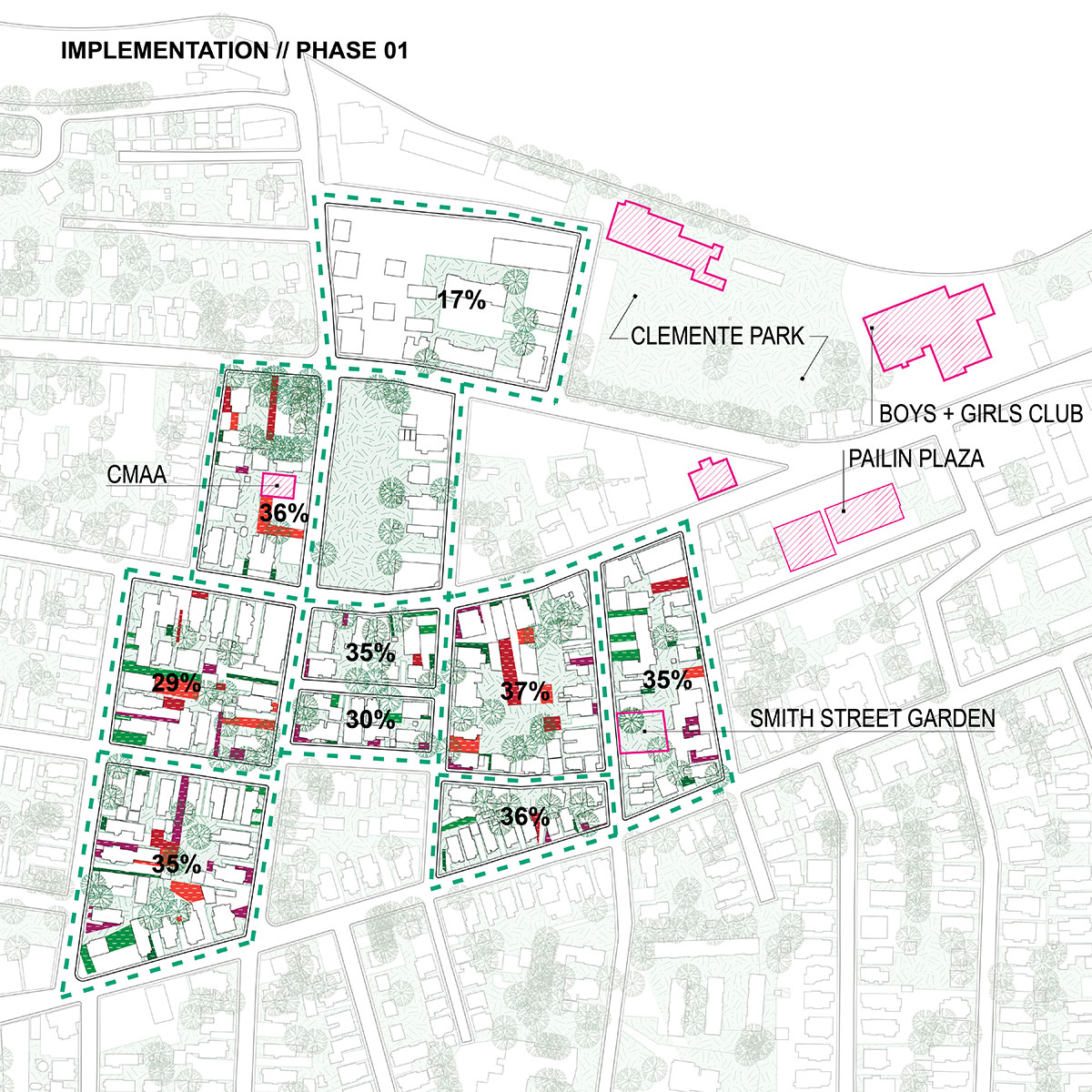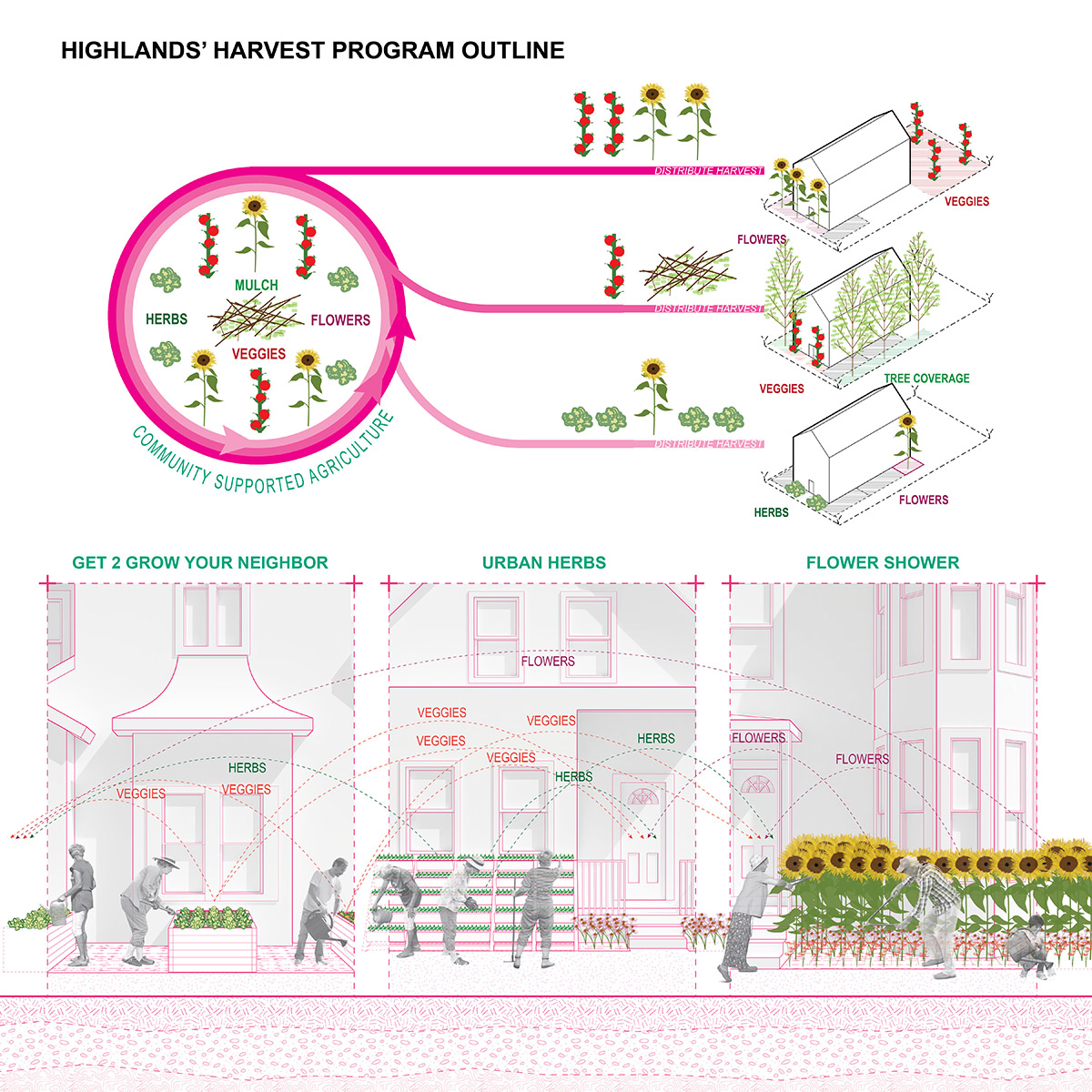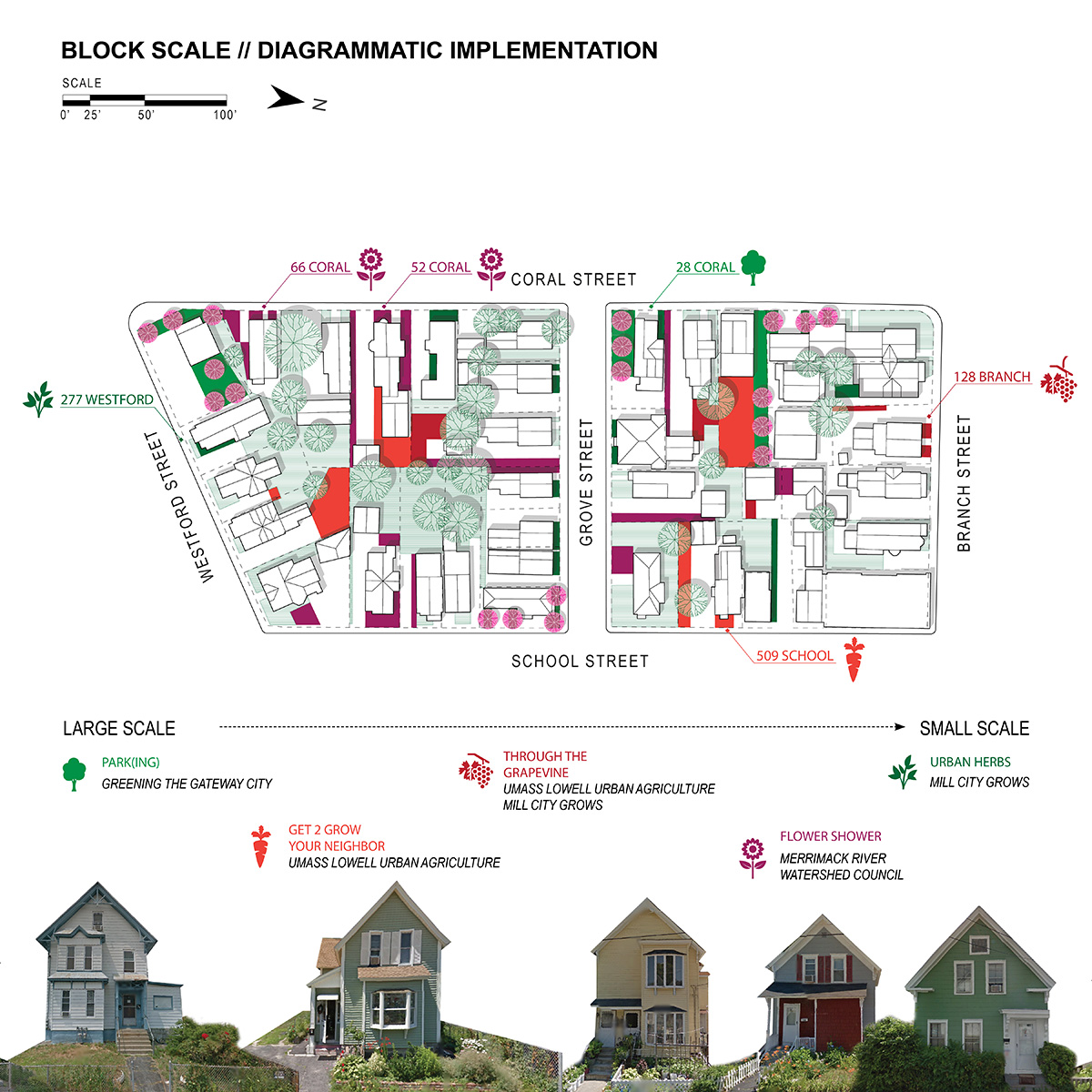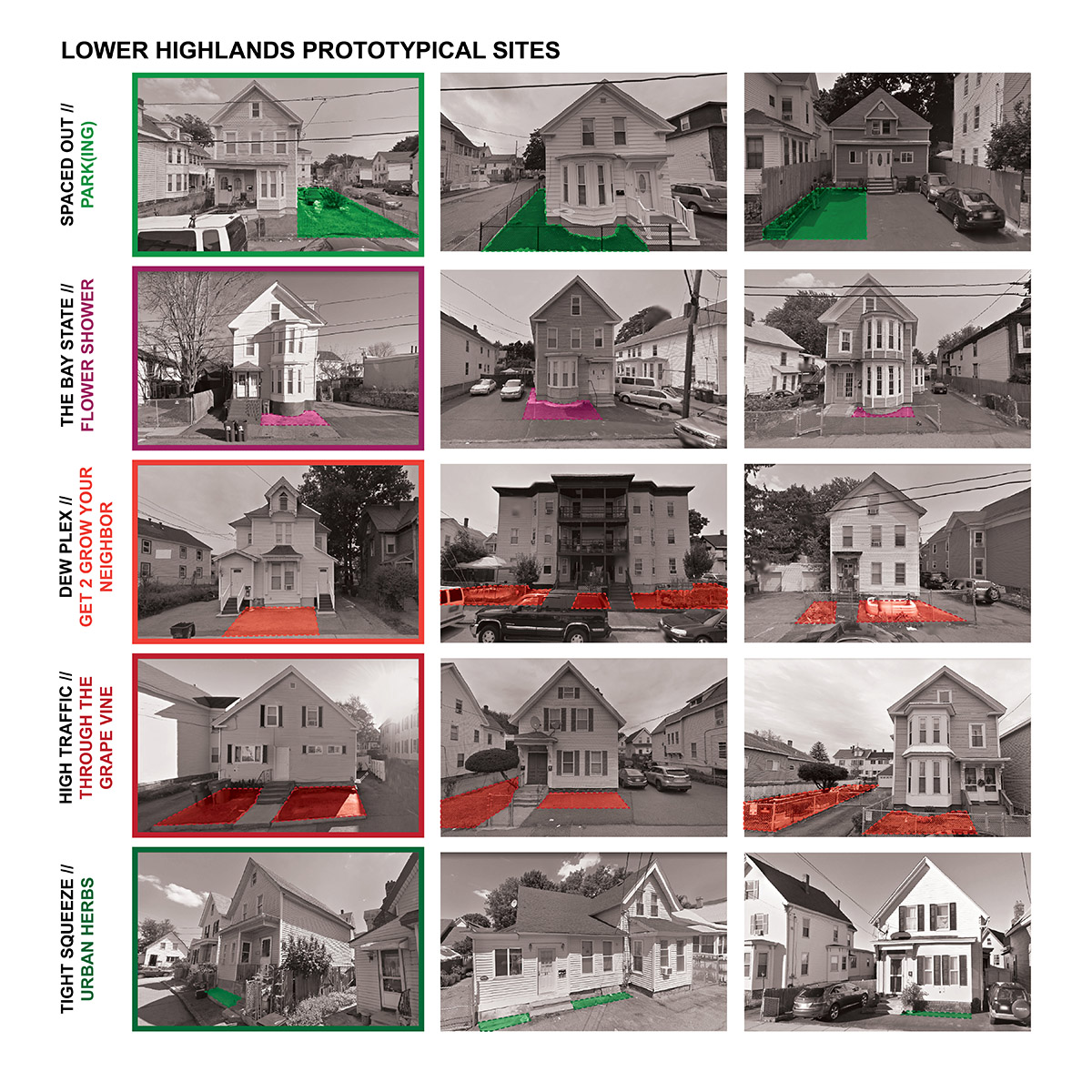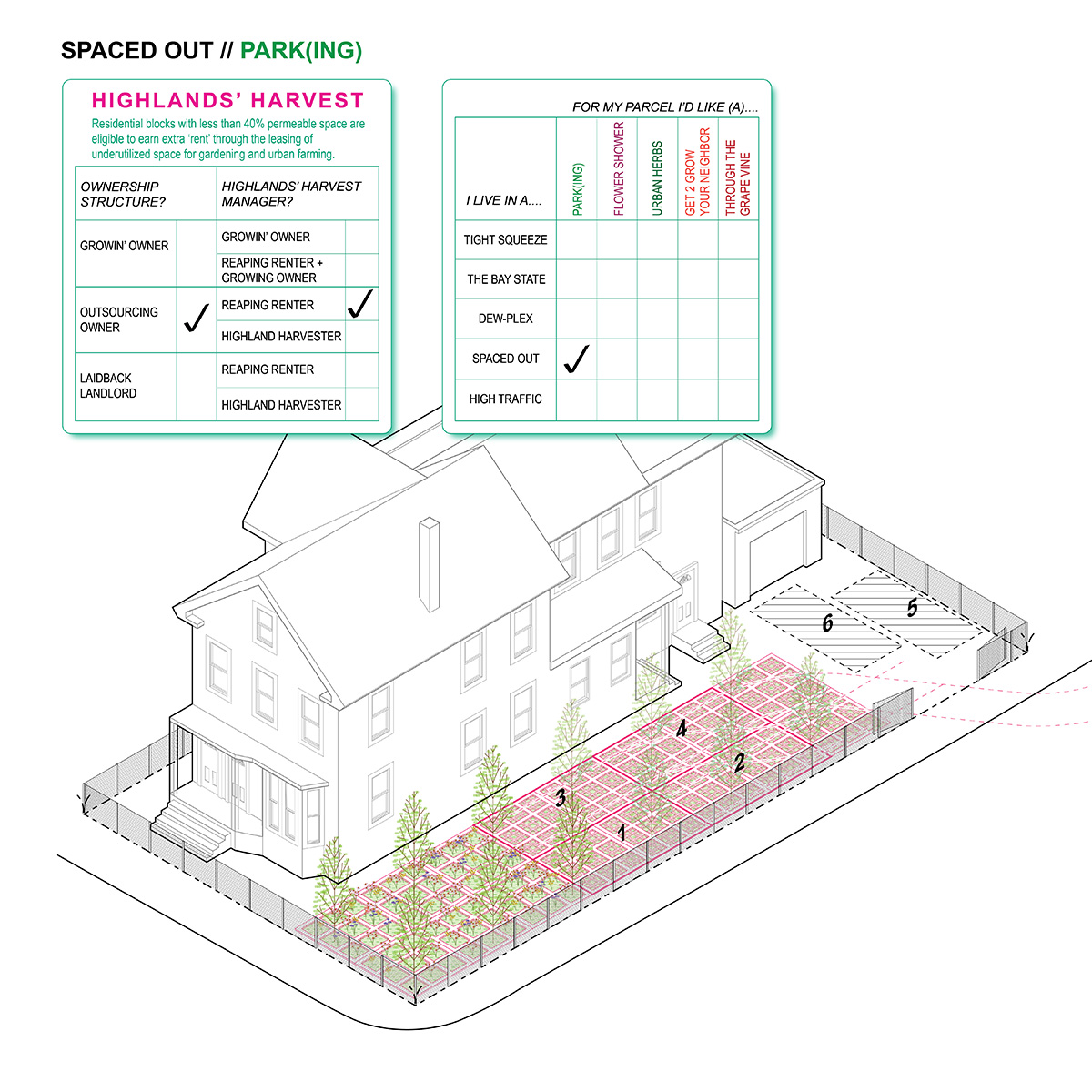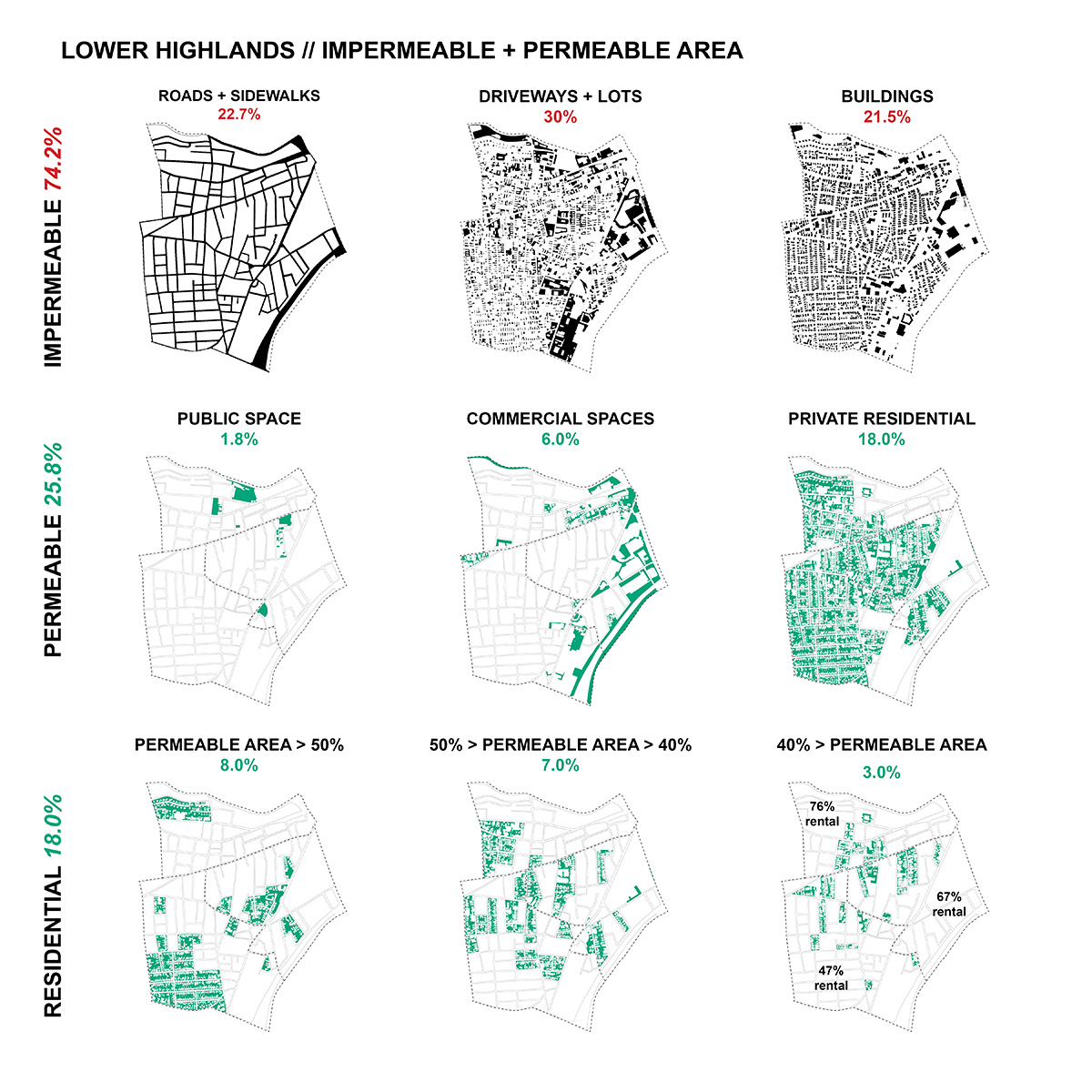Highlands’ Harvest
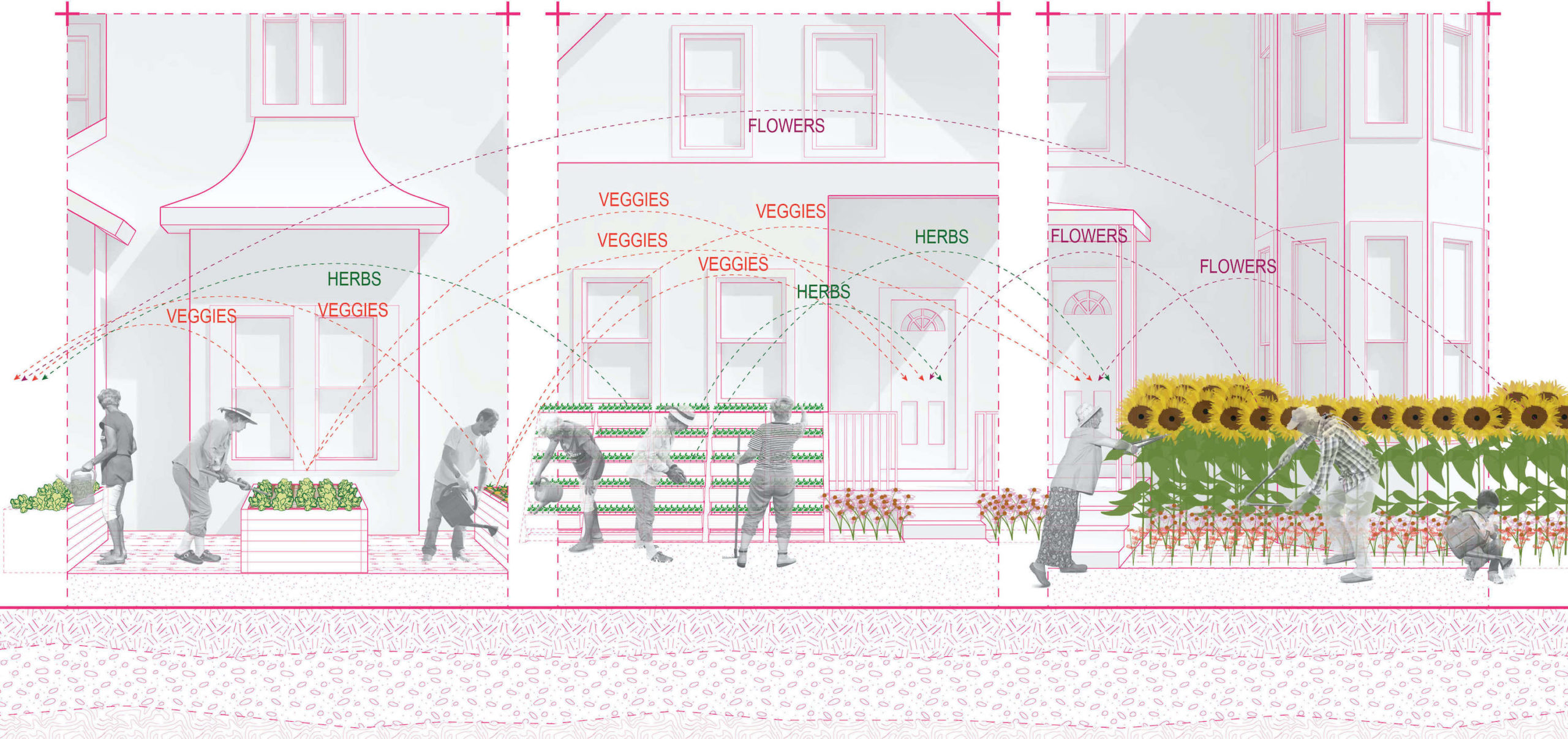
by Alysoun Wright (MUP/ MLA I AP ’21)
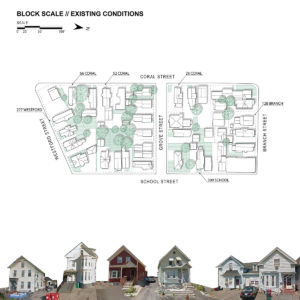 The Lower Highlands neighborhood of Lowell, MA consists predominately of residential blocks. Additionally, 30% of the neighborhood’s 74% impermeable surfaces are categorized as driveways and lots. Parking demand and considerations of maintenance in a high renter context often preference impermeable surfaces, thereby contributing to surface water runoff, water contamination, and urban heat island effect. In response, the Highlands’ Harvest pilot program seeks to increase permeable surface within the Lower Highlands Neighborhood by leveraging existing interests in gardening and food production and creatively making use of residual space within the dense urban fabric.
The Lower Highlands neighborhood of Lowell, MA consists predominately of residential blocks. Additionally, 30% of the neighborhood’s 74% impermeable surfaces are categorized as driveways and lots. Parking demand and considerations of maintenance in a high renter context often preference impermeable surfaces, thereby contributing to surface water runoff, water contamination, and urban heat island effect. In response, the Highlands’ Harvest pilot program seeks to increase permeable surface within the Lower Highlands Neighborhood by leveraging existing interests in gardening and food production and creatively making use of residual space within the dense urban fabric.
The Highlands’ Harvest Program is an optional program that is targeted towards residential blocks with less than 40% permeable area. As part of the program, homeowners self-identify impermeable portions of their parcel that are underutilized, or could perhaps function similarly with a more permeable surface covering. These spaces are then enrolled in a lease agreement with Highlands’ Harvest which pays a rental fee to the homeowner. The use and management of this space can then operate in several different scenarios, in which either a homeowner, renter, or Highlands Harvester would have the option to manage the space.
Full implementation of the Highlands’ Harvest program would result in the distribution of herb gardens, flower patches, and urban farming across residential blocks within the Lower Highlands. The harvest of these micro-sites would then be aggregated and redistributed as an ongoing CSA to block participants.
The objective of Highlands’ Harvest is to build upon the neighborhood’s existing strengths in order to move towards and incentivize the creation of a more permeable urban fabric. The hope is to demonstrate that such shifts can be productive, collaborative, and incremental. Furthermore, it is envisioned that through this process both owners and renters alike will feel greater connection to their community and urban fabric.
